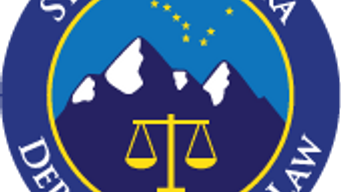As the rest of the U.S. prepared for the Super Bowl by buying avocados to make guacamole, installing new big-screen TVs, and donning Ram/Bengal-themed face paint, select corners of corporate America were preparing for the biggest advertising day of the year.
In 2021, companies spent approximately $485 million on ad slots during the big game, and the average cost of a 30-second commercial slot was about $5.6 million. With such high stakes, plus the intensive “Standards and Practices” review employed by the TV networks, one would assume that anything that makes the cut is above reproach. (The review board won’t even let advertisers use “Super Bowl” because it’s trademarked, which is why you often hear “the Big Game” in ads.)
However, the following examples of legal challenges to your favorite Super Bowl commercials demonstrate that the world of advertising law can be tricky to navigate, and companies that advertise simply cannot mitigate their litigation risk to zero.
Competitor Lawsuits Under the Lanham Act
In the spirit of the big game, our first example is a tale of two competitors. In 2019, Anheuser-Busch launched a series of ads comparing Bud Light to MillerCoors products (Miller Lite and Coors Lite). The difference? Bud Light is made with “100% less corn syrup than Miller Lite.” Needless to say, MillerCoors did not appreciate this comparison and sued Anheuser-Busch for false advertising under the Lanham Act.
Interestingly, Anheuser-Busch’s statements were factually accurate. MillerCoors used corn syrup as a fermentation aid during the brewing process, though there was none present in the final product. Nevertheless, under the Lanham Act, a company may still be liable if a true statement is likely to deceive or confuse consumers. During litigation, MillerCoors presented evidence that, after watching the Bud Light ads, some customers believed that Miller Lite and Coors Light contained corn syrup. The district court agreed with MillerCoors that the ads were likely to mislead consumers and issued a preliminary injunction prohibiting Anheuser-Busch from using the term “corn syrup” in any ads without further context.
The Seventh Circuit eventually lifted the injunction almost a full year later, reasoning that the ad was not deceptive, because Miller Lite and Coors Light listed corn syrup as an ingredient on their bottles. After a review on the field (of ads), even if a statement in an ad is true, your company should consider the larger context and possible consumer perception to avoid Lanham Act lawsuits for false advertising.
National Advertising Division (NAD) Challenges
Competitors may also run the hurry-up offense with a more expedited review of an advertisement through an NAD challenge. One of T-Mobile’s main rivals did just that in response to a T-Mobile commercial shown during last year’s Super Bowl. In the commercial, various celebrities (including Tom Brady and Rob Gronkowski in one and Gwen Stefani and Adam Levine in the other) are seen talking on “spotty networks.” In each commercial, there is a disconnect between what Brady and Stefani said and what Gronkowski and Levine heard, leading to humorous results. At the end, the ad refers vaguely to other networks and emphasizes the benefits of T-Mobile’s 5G network for “big decisions.”
As a result, the aforementioned network competitor challenged the ads before BBB National Programs’ NAD, which found that the commercials conveyed the message that T-Mobile provides better 5G service for video calls than its competitors, and consumers making calls on a competitor’s service were likely to experience spotty service. While T-Mobile argued that this message was substantiated by its 5G coverage and 5G speed test results, the NAD disagreed and recommended that the ads be discontinued, and T-Mobile obliged.
Notably, the NAD’s recommendation is just that—a recommendation. As an independent, nonprofit organization, BBB National Programs is not a government entity or affiliated with any government agency. Therefore, T-Mobile’s participation in the review process was voluntary, as was its choice to abide by the NAD’s recommendation and pull the ads.
However, if an advertiser refuses to participate in the review or to comply with NAD’s recommendations, NAD will refer the matter to the appropriate regulatory agency (usually the FTC). This shows that even if a competitor (or consumer) does not pursue legal action, there may nevertheless be consequences for ads that fail to toe the line.
Even if you’re not creating Super Bowl ads, there’s still a lot to consider when marketing your products to consumers. Help mitigate your risk of fumbling the ball along the way, and reach out to the authors of this article—or any other attorney in Venable’s Advertising and Marketing Group—with questions about advertising law, or for assistance in reviewing your advertisements for compliance and litigation risk. And please subscribe to our monthly newsletter.





